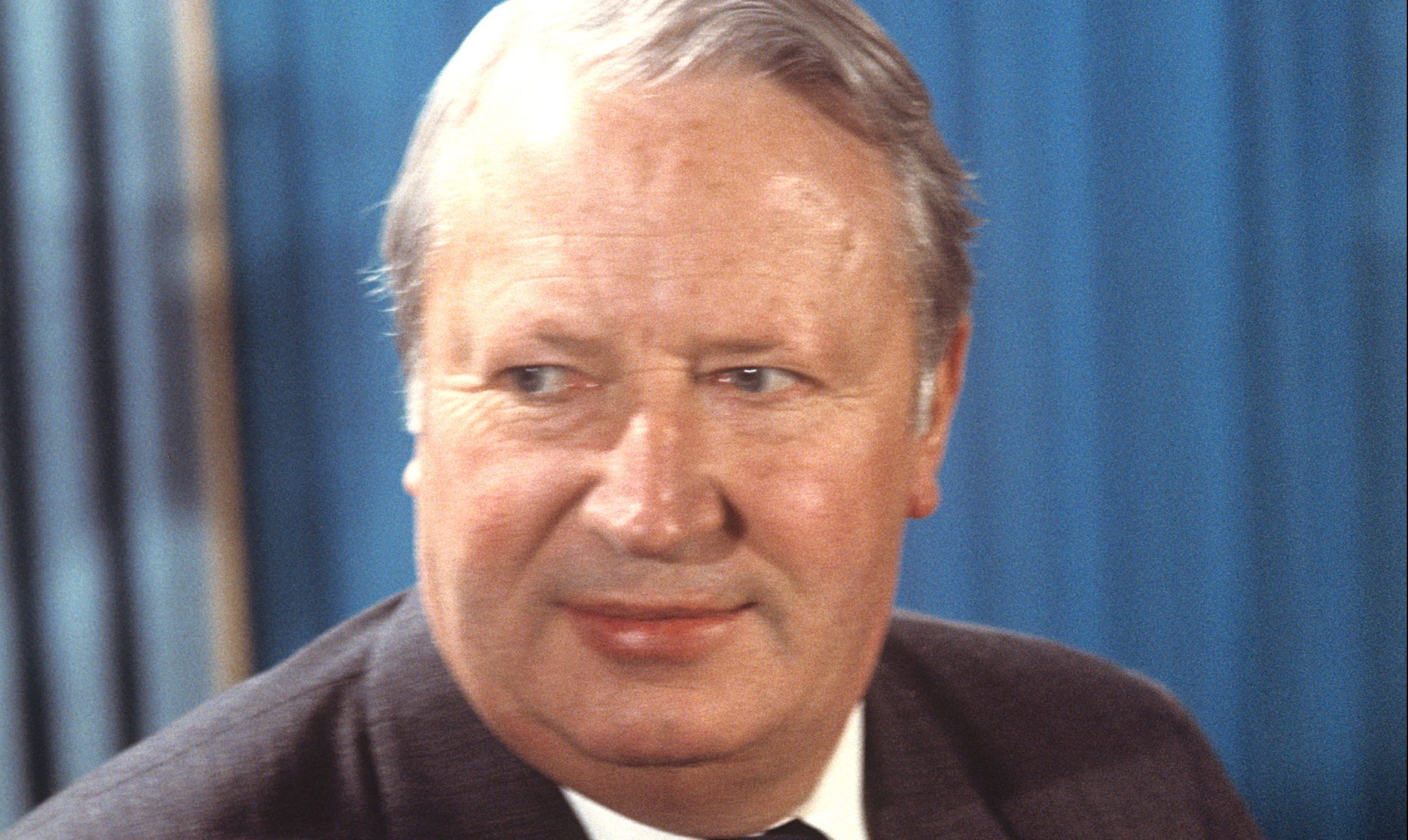
FORMER Conservative prime minister Sir Edward Heath would be questioned over allegations that he raped and indecently assaulted boys as young as 10 were he alive today, a controversial police report has said.
A Wiltshire Police investigation, called Operation Conifer, concluded that seven of the claims would have been sufficiently credible to justify questioning Sir Edward, who was prime minister between 1970 and 1974, under caution.
The report does not address the question of Sir Edward’s guilt or innocence because the remit of the two-year £1.5 million inquiry was to see whether there was enough evidence to interview the former MP for Bexley, who died at home in Salisbury in July 2005, aged 89.
None of the allegations about which Wiltshire Police would have questioned Sir Edward relate to when he was prime minister, the force said.
The Crown Prosecution Service has a policy of not making a charging decision on a suspect who is dead because they cannot be prosecuted.
The allegations Sir Edward would have been questioned over include rape of a boy aged 11, indecent assault of a 10-year-old boy and the indecent assault of a 15-year-old boy during three “paid sexual encounters”, and are said to have occurred between 1961 and 1992 in the Met Police, Kent, Sussex, the Channel Islands and Wiltshire force areas.
Lord Hunt of Wirral, chairman of the Sir Edward Heath Charitable Foundation, and Lord Armstrong of Ilminster, former Cabinet Secretary, said in a statement: “The Wiltshire Police report is profoundly unsatisfactory because it neither justifies nor dispels the cloud of suspicion.”
The report concluded: “The SIO concluded that there is sufficient suspicion to have interviewed Sir Edward Heath under criminal caution regarding his suspected involvement in child sexual abuse.
“This conclusion relates to seven of the 42 disclosures that were considered by the Operation Conifer investigation.”
The report stressed that “no inference of guilt” should be made from the fact he would have faced questioning.
The 100-page “summary closure report” details 42 allegations made against Sir Edward and categorises them as:
- Seven alleged victims whose accounts would warrant interviewing him under caution;
- 19 cases where Sir Edward would not have been interviewed under caution because of the extent of undermining evidence;
- 10 cases of third party disclosures;
- Three cases of mistaken identity;
- Three complaints made anonymously.
Sir Edward was the most high-profile political figure to be linked to child sex abuse allegations that swept across Westminster.
A raft of politicians from across the political spectrum have been accused of abusing children, including ex-home secretary Leon Brittan, former Conservative MP Harvey Proctor, Liberal Democrat Sir Cyril Smith and Labour peer and former MP Lord Janner.
The report reveals that most of the alleged victims were boys aged 11 to 15 and the allegations date from 1961 when Sir Edward was lord privy seal in the Macmillan government to 1992, when he was in his 70s.
Operation Conifer was launched in 2015 after Sir Edward was named as a suspect in an investigation into historical child sex abuse.
Friends and colleagues of Sir Edward have said he was “completely asexual” and the child sex abuse allegations were “totally uncharacteristic and unlikely”.
The inquiry has proven controversial ever since it began when a senior police officer made a television appeal outside Sir Edward’s former stately home, Arundells, urging potential victims to come forward.
That officer, Superintendent Sean Memory, has since been signed off work on long-term sick leave.
Last year, the probe found no evidence that a prosecution against brothel keeper Myra Ling-Ling Forde was dropped because of threats to allege publicly that Sir Edward had been involved in sexual offences.
In November, Dr Rachel Hoskins, who was enlisted by detectives to examine evidence, said she had “exposed a catalogue of fabrication” at the heart of the probe and warned the force it should immediately end its investigation into a key accuser’s “pernicious” claims of satanic ritual abuse.
In a statement following the report’s release, Wiltshire Chief Constable MikeVeale said officers have “gone where the evidence has taken us”, whether it supported the allegations or not.
He said: “The report does not draw any conclusions as to the likely guilt or innocence of Sir Edward Heath.
“I am satisfied there are compelling and obvious reasons to investigate allegations made against Sir Edward Heath.”
He added that it would be an “indefensible dereliction” of his duties not to investigate those allegations.
The report revealed that there was “reason to suspect” two people may have”intentionally misled” the police by alleging that they were abused by Sir Edward.
“In the case of one of these disclosures, a live criminal investigation remains ongoing,” the report states.
“In the case of the other, a criminal investigation was undertaken and an individual was formally cautioned for an offence of wasting police time after they admitted that they had misled the investigation by making three separate disclosures, where they had purported to be three different people.”

Enjoy the convenience of having The Sunday Post delivered as a digital ePaper straight to your smartphone, tablet or computer.
Subscribe for only £5.49 a month and enjoy all the benefits of the printed paper as a digital replica.
Subscribe